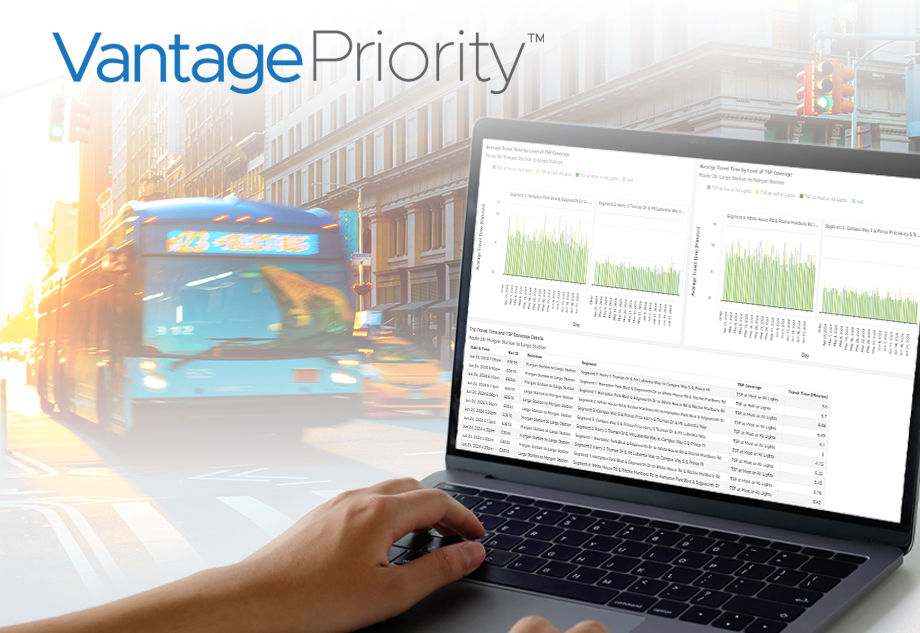
New ClearGuide Volumes Introduces Probe Volume Data as a Powerful Add-on

ClearGuide® Volumes offers new volume-based traffic analytics powered by ClearData® to help agencies make even more precisely honed planning and operations decisions and produce new types of vital reports.
Transportation Planners, TSMO Managers, Traffic Engineers, City Managers, Contractors, and more will benefit from ClearGuide’s 15-minute interval, probe data-based traffic volume estimates, which are derived from proven machine-learning models.
Volume Data is Important
Knowing the number of vehicles on the roadway offers many benefits, as illustrated in the use cases below. The cases leveraging volume data may require information for which only volume data is necessary, or information resulting from the powerful combination of volume and speed data sets.
In each use case, the ideal volume data metrics and reports are provided with recency, accuracy, and full network coverage. In the real world, however, that is not easily achieved. Why?
Volume Data is a Challenge to Acquire
In-field sensors can provide vehicle counts, and are an important component of ITS. However, it is not possible to install sensors at every location, and where sensors are deployed in the field, agencies have typically invested heavily to acquire and maintain them.
At the same time, agencies are increasingly compelled to produce volume data for Environmental Impact Reports, Highway Performance Monitoring System (HPMS) compliance, and other federal, state, and local mandates. Agencies can spend a lot of money on outside contractors, plus internal staff time and energy, for compensatory data collection programs. And yet the result is all too often low-quality, outdated data: because manual data collection is so costly, agencies without ClearGuide are often forced to work with data that is several years old.
Introducing ClearGuide Volumes
ClearGuide Volumes solves this by providing 15-minute interval, probe data-based traffic volume estimates, available as an add-on directly within the ClearGuide Roadways interface.
 Average Hourly Vehicle Volume, as shown in the ClearGuide Roadways map with the Volumes add-on.
Average Hourly Vehicle Volume, as shown in the ClearGuide Roadways map with the Volumes add-on.
ClearGuide Volumes provides:
- Crucial, difficult to capture traffic volume insights for both mandatory regulatory reporting as well as enhanced performance analysis
- Comprehensive volume data coverage, for roadway Functional Classes 1-4
- Most recent volume data in 15-minute intervals, updated monthly
- Elimination of cost and work hours spent on volume data collection by other means
- Convenient visibility of volume data alongside speed and travel time data sets
- Easily generated volume reports that are otherwise cumbersome to produce yet regularly required
- A unified platform that increases operational and planning efficiency, improving overall traffic flow and safety
Among the new metrics ClearGuide Volumes can report are:
- Average Hourly Volume (AHV). The average total number of vehicles per hour on a given roadway, route, or in an area.
- Average Daily Traffic (ADT). The average total number of vehicles over a user-customized date range. Annual Average Daily Traffic (AADT) is the total number of vehicles over the course of one year, divided by 365.
- Vehicle-Miles Traveled (VMT). The total distance traveled by all vehicles on any user-defined route, with 1 VMT calculated as 1 vehicle traveling for 1 mile.
The following additional metrics result from the dynamic combination of ClearGuide speed and volume data working together:
- Vehicle-Hours Traveled (VHT). A measure of total time vehicles spend on a given route or roadway, calculated by multiplying the number of vehicles that travel the route by the time it takes them.
- Vehicle-Hours of Delay (VHD). A measure of total time all vehicles are delayed on a route or roadway, calculated by subtracting the free flow travel time from the actual travel time, and multiplying by the number of vehicles.
- User Delay Cost (UDC). A measure of the economic cost associated with vehicle delays on a route or roadway. UDC = VHD x driver’s time value. This requires an estimate of the value of the lost time (e.g., in lost wages or business productivity).
 Vehicle Volume by Day, shown in ClearGuide Roadways as a report. Compare with Average Daily Traffic (ADT).
Vehicle Volume by Day, shown in ClearGuide Roadways as a report. Compare with Average Daily Traffic (ADT).
ClearGuide Volumes Use Cases
For Planning
Regulatory Reporting
Traffic volumes are a critical input for federal data submissions, and increasingly a required metric for state and local level infrastructure project approval as well. Reporting requirements are never-ending, frequent, and mandatory. As such, they are too often a logistical headache for agencies with limited staff or third-party resources and budgets to collect the required volume data.
ClearGuide Volumes:
- Not only provides this data but makes it easy to generate the required reports
- Does so inexpensively with probe data over traditional data collection methods
Commonly required reports include:
- Environmental Impact Reports
- HPMS compliance
- Reports required by State and Local laws on Congestion and Environmental Impacts before greenlighting:
- New housing development
- Infrastructure expansion projects
Enhanced Planning
Volume data availability enhances modeling and impact analysis of new infrastructure projects, signal retimings, and speeding countermeasures. In one central ClearGuide user interface, Roadways delivers information about average vehicle speed changes on a given route; Volumes reports how many vehicles were affected by that delay, adding to the information on traffic flow change. The granularity of volume data enhances the accuracy of predictive modeling for project justification, planning, and prioritization.
ClearGuide Volumes enables:
- VMT-based responsible planning
- Congestion modeling by traffic volume
- Emissions and Economic impact estimates
VMT, Emissions, and Economic Impact for Responsible Planning
In environmental analysis or emissions impact assessment, MPOs increasingly rely on VMT as a productive and forward-looking metric for responsible transportation planning.
Reducing VMT means reducing reliance on single-occupancy vehicles. This is considered a far more responsible goal than simply widening roadways to accommodate even more vehicles.
ClearGuide’s volume data collection and VMT reporting allow agencies to meet this challenge in a sector increasingly held to reduced-carbon emissions standards and stricter HPMS requirements.
Higher VHT and VHD indicate not only more congestion but also increased fuel consumption contributing to an adverse environmental impact, as well as lost productivity contributing to an adverse economic impact.
With vehicle count, VMT, VHT, VHD, and user delay cost data, along with average emissions and fuel consumption per vehicle,* it’s possible to estimate the overall emissions as well as economic impact of a congested roadway, route, or area.
*Estimated from data available by vehicle type from the USDOT BTS Updates National Transportation Statistics 06/28/2024.
 Average Daily Traffic is the sum of all 15-minute traffic counts for X days, divided by X.
Average Daily Traffic is the sum of all 15-minute traffic counts for X days, divided by X.
For Operations
Enhanced Performance Measurement
By providing total vehicle counts, ClearGuide Volumes enables the measurement of new key performance indicators related to congestion amelioration efforts.
Congestion impact assessment
With AHV and VHD, it’s possible to estimate the actual percentage reduction or increase in vehicle congestion, not just average speed, for any given project. This allows for specific and compelling public accountability reports that can state, e.g., “The city reduced congestion on X corridor by 25%.”
Augmented before-and-after studies
Volumes allows agencies to deliver before-and-after study results that may now include:
- Impact of signal retiming on congestion by volume
- Impact of speeding countermeasures on congestion by volume
- Environmental impact of projects
- Economic impact of projects
For Planning & Operations
Roadway Capacity Management Roadway capacity refers to the maximum number of vehicles that can reasonably pass a section of roadway over a given period without severe congestion, typically expressed in vehicles per hour.
In addition to being an alternate way of determining congestion impact, capacity management enables:
- Overflow-based work zone detour routing
- Overflow-based post-incident analysis
- Overflow-based disruptive event and evacuation prep
Combined with capacity data, volume data from prior similar projects, incidents, and events enhances planning for upcoming traffic disruptions around construction lane takes, traffic crashes, sporting events, concerts, weather events, etc., where previously only speed and travel time data were available.
ClearGuide Volumes offers saved cost and work time from collecting volume data by older, substandard means. Maps of various key volume metrics are conveniently visible alongside speed and travel time data sets. ClearGuide Volumes is perfect for helping ensure the timely filing of federally required volume-based reporting that is typically difficult to produce. The volume analytics tools also enable increased operational and planning efficiency in one unified platform.
For a free demonstration of ClearGuide Volumes, submit a demo request here.
About the Author
Jeff Venables is marketing manager, smart mobility applications at Iteris.
Connect with Jeff Venables on LinkedIn
 X
(Twitter)
X
(Twitter)
 Facebook
Facebook LinkedIn
LinkedIn Copy
Link
Copy
Link Email
Email

